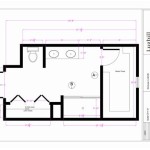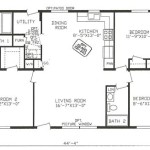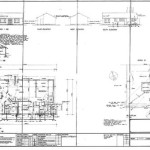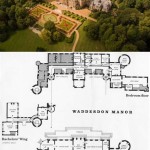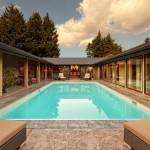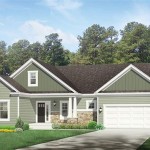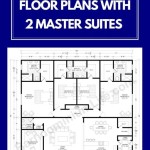Understanding Floor Plans for In-Law Suites
The demand for multi-generational living arrangements is steadily increasing, leading to a heightened interest in in-law suites, also known as accessory dwelling units (ADUs). These suites offer a self-contained living space within a larger property, providing privacy and independence for family members while maintaining proximity. A well-designed floor plan is crucial for maximizing the functionality and comfort of an in-law suite. Careful consideration must be given to layout, size, accessibility, and compliance with local building codes.
Floor plans for in-law suites vary significantly depending on available space, existing architectural structure, and the specific needs of the occupants. They can range from a converted basement or garage to a purpose-built addition attached to the main house. Regardless of the approach, a successful floor plan will prioritize privacy, independence, and accessibility.
Key Considerations in In-Law Suite Floor Plans
Designing an effective in-law suite floor plan requires careful attention to several key elements. These include zoning regulations, accessibility requirements, privacy considerations, and space optimization. Failing to address these factors can result in a suite that is not only uncomfortable but also non-compliant with local laws.
Zoning and Building Codes: The first step in planning an in-law suite is to understand local zoning regulations and building codes. These regulations often dictate the allowable size, location, and amenities within an ADU. Some municipalities have specific requirements regarding square footage limitations, parking provisions, separate entrances, and utility connections. Failure to comply with these regulations can result in fines, legal action, or the inability to rent out the unit in the future. Thorough research and consultation with local authorities are essential before beginning any construction or renovation project.
Accessibility: Accessibility is a critical factor, especially if the suite is intended for elderly or disabled relatives. Universal design principles should be incorporated into the floor plan to ensure that the space is usable by people of all abilities. This may include features such as wider doorways and hallways to accommodate wheelchairs or walkers, grab bars in bathrooms, roll-in showers, and ramps or elevators to overcome changes in elevation. The Americans with Disabilities Act (ADA) provides guidelines for accessible design, although these are typically required only for commercial or public accommodations. However, incorporating ADA-compliant features can significantly improve the comfort and usability of the in-law suite for individuals with mobility limitations. The placement of light switches and outlets should also be considered for ease of access.
Privacy and Independence: Maintaining privacy and independence for both the occupants of the main house and the in-law suite is a key objective. A separate entrance is almost always desirable to minimize disruption and allow for independent coming and going. Soundproofing walls and ceilings can help to reduce noise transmission between the two living spaces. The placement of windows should also be carefully considered to avoid overlooking adjacent properties or compromising privacy. Sound insulation within interior walls of the suite itself will also enhance the comfort of the occupants.
Essential Components of an In-Law Suite Floor Plan
A complete in-law suite typically includes several essential components: a living area, a bedroom, a bathroom, and a kitchen or kitchenette. The size and configuration of these spaces will depend on the overall square footage of the suite and the needs of the occupants. The arrangement of these components within the floor plan should prioritize functionality, comfort, and privacy.
Living Area: The living area serves as the primary gathering space within the in-law suite. It should be large enough to accommodate seating, a television, and perhaps a small dining table. Natural light is an important consideration, and large windows or sliding glass doors can help to create a bright and inviting space. The placement of furniture should be carefully considered to allow for easy movement and accessibility. If the suite is limited in space, consider multi-functional furniture, such as a sofa bed or a coffee table with storage.
Bedroom: The bedroom should provide a comfortable and private space for sleeping and relaxation. Adequate closet space is essential for storage. The placement of windows should be carefully considered to minimize noise and light pollution. Blackout curtains or shades can help to create a dark and quiet sleeping environment. Building codes typically dictate the minimum size and egress requirements for bedrooms, including the presence of a window or door that can be used as an emergency exit. The floor plan should designate appropriate space for a bed, nightstand, and other bedroom furniture.
Bathroom: The bathroom should be designed to be functional and accessible. A walk-in shower is often preferred over a bathtub, especially for elderly or disabled individuals. Grab bars should be installed near the toilet and shower for added safety. The placement of the sink and toilet should allow for easy maneuverability. Adequate ventilation is essential to prevent moisture buildup and mold growth. The floor plan should adhere to plumbing code requirements for clearances between fixtures and wall surfaces.
Kitchen or Kitchenette: A kitchen or kitchenette is a crucial component of an in-law suite, as it allows for independent meal preparation. A full kitchen typically includes a refrigerator, stove, oven, microwave, sink, and ample counter space. A kitchenette may be a more space-efficient option, consisting of a small refrigerator, microwave, and hot plate. Adequate storage space is essential for dishes, cookware, and food items. The placement of appliances should be carefully considered to create a functional and safe work area. Building codes often require specific clearances around cooking appliances and electrical outlets. The floor plan must account for plumbing lines for sinks and dishwashers.
Examples of In-Law Suite Floor Plan Layouts
Numerous floor plan layouts can be adapted for in-law suites, depending on the available space and the specific requirements of the occupants. Some common layouts include:
Attached Suite with Separate Entrance: This is a common design where the in-law suite is connected to the main house but has its own separate entrance. This provides a sense of privacy and independence for the occupants. The suite may be located on the ground floor or an upper level, and it can be accessed via an exterior door or a private interior hallway. This layout typically includes all the essential components of an in-law suite: a living area, bedroom, bathroom, and kitchen.
Basement Conversion: Converting a basement into an in-law suite is a cost-effective way to create additional living space. Basement conversions often require improvements to lighting, ventilation, and insulation. Egress windows or doors are essential for safety. The floor plan should address potential issues such as moisture and radon. Adequate ceiling height is also a critical consideration. It is common to have to adjust or reroute existing plumbing and electrical features.
Garage Conversion: Converting a garage into an in-law suite can be a practical option, especially if the garage is detached from the main house. Garage conversions typically require improvements to insulation, flooring, and electrical wiring. A separate entrance and windows must be added. The floor plan should address potential issues such as drainage and access to utilities. This layout is often smaller, but can efficiently include a living space, bedroom, bathroom, and kitchenette.
Above-Garage Apartment: Building an apartment above a detached garage can be a versatile option. It provides a separate living space with enhanced privacy. This requires careful planning for structural support, access to utilities, and adherence to zoning regulations regarding height and setbacks. This type of in-law suite usually encompasses all necessary features.
When considering a floor plan for an in-law suite, it is crucial to prioritize the comfort, safety, and independence of the occupants. By carefully addressing zoning regulations, accessibility requirements, privacy concerns, and space optimization, it is possible to create a functional and inviting living space that meets the needs of both the occupants and the homeowners.

In Law Suite Plans Give Mom Space And Keep Yours The House Designers

House Plan 65862 Tuscan Style With 2091 Sq Ft 3 Bed 2 Bath 1

Southern Style House Plan With In Law Suite

Modern Farmhouse Plan With In Law Suite 70607mk Architectural Designs House Plans

Homes With Mother In Law Suites

House Plans With In Law Suites Houseplans Blog Com

Pin By Jessie Brooks On Mother In Law Head Quarters 2024 Apartment House Floor Plans

Exquisite Mountain Modern Home Plan With In Law Suite And 4 Car Garage 95104rw Architectural Designs House Plans

Front Side View House Plans With A Separate In Law Suite

House Plans With In Law Suites Houseplans Blog Com

